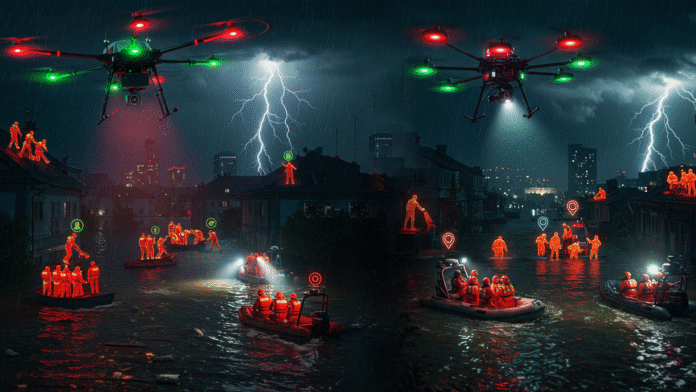Ceremony Dispatching Relief Goods to Afghanistan
A ceremony marking the dispatch of relief goods to Afg+hanistan was held at the NDMA warehouse in Islamabad, attended by Federal Minister for Sports Das Kohistani, as well as officials from the National Disa-ster Management Authority (NDMA) and the Ministry of Foreign Affairs.
On the directives of Prime Minister Shehbaz Sharif, NDMA is sending 105 tons of relief supplies to assist victims of the recent deva-stating earthq-uake in Afghanistan.
According to NDMA, the consignment includes ration bags, tents, blankets, mats, and medicines. The aid is being transported in five 40-foot container trucks via the Torkham border.
Meanwhile, Deputy Prime Minister and Foreign Minister Ishaq Dar held a telephonic conversation with Afghan Foreign Minister Amir Khan Muttaqi, reaffirming that Pakistan stands with the brotherly Afghan people in their time of distress.
It is worth noting that over 1,400 people lost their liv-es and more than 3,000 were Inju-red in Sunday night’s earthq-uake in Afghanistan.
Disclaimer: Informational post, based on available reports. Image is Ai-generated and is for reference. The incident shown in image is not real and created by Ai.
Flood Rescue Operations Drones
Floods are one of the most dangerous natural disasters that can be extremely challenging to rescue crews because of the dynamic conditions, vast areas of water, and challenging landscape. Technological progress has revolutionized the nature of managing disasters over the years, with drones becoming an indisputable disaster management tool during flood rescue efforts. These unmanned aerial vehicles (UAVs) have benefits that contribute to the speed, safety, and efficiency of rescue operations that ultimately save lives and limits damage.
The Emerging Menace of Flooding and Necessity of a Successful Rescue
Flooding occurs due to heavy rain, cyclones, dam bursts or storm surges and impacts millions of people around the world. In response to the disaster, provision of timely rescue and relief is key in reducing the effects of the disaster.
Use of Drones in Disaster Management
Drones were initially made to be of military and commercial use, but now they are also of great humanitarian value. Drones have cameras, sensors, and communication devices, which give them the ability to capture aerial views that are not possible or accessible elsewhere. Drones are also useful in flood rescue, where they can cover large-scale areas, locate victims trapped, conduct inspections of damages, and help in the organization and implementation of rescue mission activities with less risk.
The Main Applications of Drones to Flood Rescue
Rapid Aerial Assessment
Emergency teams require timely information about the affected areas as well as precise information after floods hit. The drones can be deployed quickly to fly over areas of the flood and record high resolution photos and videos. This live pictorial information can be used by teams to know the extent of floods, water depth, road conditions and areas of risk.
Traditional helicopters are costly and not always fast to deploy, but drones can be deployed promptly, can work at a low altitude to investigate the area in great detail, and can fly back and forth as many times as necessary. This air survey is critical in guiding rescue teams to where they are most required and preventing hazardous areas.
Find Stranded or Injured People
Finding the trapped victims in the flooded houses or remote places is a very essential and challenging activity. Drones with thermal imaging cameras can sense the heat of people even when there is dense foliage or low visibility. Other drones are also equipped with loudspeakers to deliver instructions or reassurance to people trapped.
This capability minimizes the amount of time required to locate survivors so that they can receive timely assistance or evacuation. It also reduces risk to rescue workers who may otherwise be exposed to unsafe waters or unstable structures without prior knowledge of what is happening on the ground.
Provision of Necessary Goods
With the failure of roads and communication lines, transporting food, water, medicines, and life jackets becomes a problem. Lightweight emergency supplies can be delivered to secluded individuals by small drones, including quadcopters. This can keep the victims alive until the responders come or offer essential medical care.
Such delivery missions bypass flooded or blocked roads and can be of great use in rural or urban areas with complete inundation. New payload systems enable drones to deliver small masses precisely to a defined location on the GPS map.
Mapping the Area of Flood Damage
This can be used to create 3D landscape models and flood maps by integrating the geographic information system and image stitching too. While during recovery efforts these maps used to facilitate the authorities for recognition.
Damage assessment to houses, roads, bridges, dams and electrical installations is also supported by drones in the post-flood period. This is used to inform disaster declarations, insurance claims and rebuilding plans.
Communication Relay
Communication networks are almost always unavailable in the hard hit areas. Drones may be used as an interim airborne communication relay, to restore contact to rescue teams, hospitals, and command centers. Drones with signal enhancers or mesh network nodes improve coordination in cases of disaster rescue by flying or circling around the disaster area.
The Benefits of Drones in Flood Rescue Operations
- Speed and Accessibility: Drones have the ability to manoeuvre challenging terrains and inaccessible locations much faster than ground teams.
- Cost-efficiency: Drones tend to be less expensive to operate than helicopters and manned aircraft.
- Safety: Reduces exposure of human rescuers to risky areas through long-range survey.
- Live Data: Sensor Data and live video feeds allow making decisions in real time.
- Precision: Accuracy of the victims position and the position of aid delivery is guaranteed by GPS-guided navigation.
Challenges and Limitations
Although the advantages of drone use in flood rescue are numerous, there are also many challenges:
- Drone Battery Life: drones have a very short time flight of 20 to 45 minutes, unless they are being rotated in different positions, it limits their strength and restricts the conduct of continuous operation.
- Payload Capabilities: Small drones are limited in the amount of weight they can transport.
- Sensitivity to Weather: Poor visibility, heavy rain, and strong wind adversely affect the performance of drones.
- Operational Dexterity: To successfully employ drones, pilots need to be trained and functional command networks must be established.
- Data Management: The processing and analysis of large amounts of drone data require certain resources and abilities.
Flood Drones at Work Related Case Studies
Kerala Floods, India (2018)
The drones helped to search the submerged villages, find survivors, and estimate the damage. Thermal imaging also helped the rescuers to identify people hiding on rooftops. The technology helped to distribute relief faster in unreachable places.
Hurricane Harvey, USA (2017)
Drone inspection was applied by the Federal Emergency Management Agency (FEMA) to conduct baseline damage assessment. Drones captured detailed and reliable photos of the hastened property damage and provides to FEMA.
Bangladesh Floods
Drones have been used to test delivering medicine and essential supplies to isolated people in this flood-prone country. The project promised to scale the drone delivery in case of an emergency.
The Future: Drones with Other Technologies
In the future, the flood rescue potential of drones will become even more diversified with the adoption of other upcoming technologies:
- Artificial Intelligence (AI): AI has the capability to conduct image analysis automatically to view and locate victims, forecast the path of floods, and detect hazards.
- Swarm Drones: Organised groups of drones would be able to patrol greater distances more effectively.
- Increased Operating Time: The development of battery and fuel cells will increase the amount of time.
- Improved Payloads: More carrying capacity will allow larger life-saving kits or even small watercraft to be delivered.
- Finer Transmission: Real-time information communication and transmission can be improve by 5G satellites network.
- Hybrid UAVs: Drone capabilities are complemented with boat capabilities, and such hybrid UAVS could enhance scene accessibility on flooded waters.



